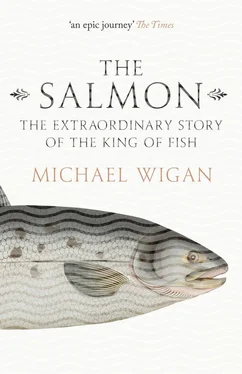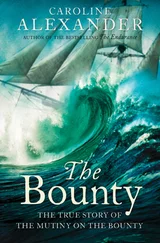1 ...8 9 10 12 13 14 ...19 The river system made in heaven is perhaps the one with big headwater lochs providing a sanctuary for the salmon and an inducement to run the river to get to it, thereby presenting anglers with chances of an encounter. Even better, possibly, would be the system with a big loch in the middle, with salmon filtering into it from below and out of it from above, the loch also acting as a natural regulator of water levels.
Sometimes forgotten are landlocked salmon. They lack the mystique of the ocean rover, and they do not leap waterfalls to remind us of their grace and power. More importantly they do not have to worry about smolt losses to cetaceans, Russian trawlermen or any other conventional threat. Pike with backwards-curving teeth might be their toughest adversary. In addition they need none of the adaptive mutations for moving between saltwater and fresh.
The lines are not hard and fast. In anadromous salmon populations some parr never leave their rivers and behave as landlocked salmon, awaiting the return of gravid hen salmon for their sneaky off-chance at fertilising the next generation.
Perhaps it should not be surprising that populations of landlocked salmon comfortably survive today. In Norwegian, Swedish and Russian lakes there are landlocked salmon as well as in North American ones. These northerly receptacles of cold water never heat up too much for salmon’s tolerance. Landlocked salmon could be compared to brown trout, happy not to migrate whilst some of their siblings run the gamut of the wilds to become sea trout.
Norway’s huge Namsen River has a majestic and impassable waterfall. Whilst I was watching its awesome power and letting the physical reality of the cascading torrent sink in, the droll ghillie told me that only the week before a visitor angler playing a feisty salmon from a downstream-drifting boat above the fall had failed in his battle-concentration to notice the advancing roar of the crashing water. He went backwards over the top, attached with his fishing line to the fish of a lifetime, and was never seen again. The story was relayed with barely suppressed ghoulish relish. Did he get his kicks telling that story every week? At any rate, above the Aunfoss waterfall subsist the resident salmon which never migrate, cut off by a giant curtain of cascading water.
Landlocked salmon are not uncommon in North America. In Idaho I have seen the scarlet kokanee, which are Pacific-origin coho salmon, and I found the sight somehow disturbing. Here are these small shoals of highly coloured fish in the translucent shallow waters of rivers and lakes, looking nervous and wary. You sense they are trapped, freakish prisoners, despite their presence having been determined by ancient geology. Really, they are true and admirable survivors, but it does not feel like that. And their chromatic violence in the drab landscape adds to a sense of displacement.
In Lake Ontario the early settlers found landlocked salmon weighing up to forty pounds. So much for the sea only being able to build up weight; pike disprove that and the lake salmon underlined it. These monsters, however, are now gone. In Maine the landlubbers are called ‘sebago’, being the name of lake in which they were first identified, and in other Maine lakes there are different varieties of salmon non-migrants.
To an angler a salmon is in its natural place in a river. That is where an encounter can occur. A river is the proper mis-en-scene for connection with the fish by a wispy length of nylon on a bendy stick, and a hook maybe no bigger than a gnat. What salmon do in rivers is a subject upon which fishermen have ventured opinion in a veritable lexicon of viewpoints. Seldom has so much speculation been focused on one inhabitant of our environment. How many shelves could you fill with the books which have celebrated the mysteries and majesties of moles, rabbits or hedgehogs?
Long ago debate centred on whether salmon eat in rivers. It seemed impossible that a large creature could enter a river a year before undertaking the rigours of spawning and live off its reserves. Anyway, why did they take fishing flies if they were not eating?
Peter Malloch, as Scotland’s Inspector of Fisheries, seemed to have nailed the matter way back. He and his team eviscerated thousands of salmon. They never found anything in the stomachs, no matter how long the fish had been in the river. Even if, as happens in a few places, salmon over-winter in a river and do not spawn till late the following year, they still do not feed. It is a stupendous fast. However, it failed to stop many subsequent armchair theorists raising spectres and postulating that salmon must eat, that sundry reasons existed for their stomachs being empty, that what was evident knowledge was as full of holes as a colander. The fact, amazing as it is, remains: salmon cease feeding in freshwater. Like snakes, which can live for months, even years, without eating, salmon subsist on their stored marine reserves. If they open their mouths to seize fishing flies in rivers, fishermen may claim they have been artful enough to override behavioural rules; angler achievement is all the greater. Not quite as great, though, as the biology of their quarry.
An area for debate between anglers and salmon professionals is whether the leaping salmon is moving upriver or not. So many times ghillies and anglers talk of ‘fish running’, meaning they are ascending the ladder of the river-system. But if you watch salmon from under a river at their level, as is possible in the riverbed salmon museum on Sweden’s River Mörrum, you see that jumping salmon may move slightly forwards from where they took off but they drift downwards as they descend in the water-column, landing back on the launch pad. Salmon maintain their station more than some of their aerial antics would suggest.
Whereas anglers believe that salmon are running past them, and sometimes try to hasten upriver and get ahead of them, river counters using electronic beams show that salmon ‘run’ mostly at night. Summertime salmon almost invariably use the cloak of darkness to hide their journey. Some counters work with parallel sets of beams, interrupted beams signifying a fish swimming upriver. Counters can be calibrated so that only fish of a certain size register, excluding smaller ones and trout.
In Canada counting salmon in clear-water rivers can be unfussy: I have seen a wide placid river where the flow is channelled into a central funnel and a human counter perched on the platform end working a clicker to record every fish passing. These wilderness workers, operating in rotations, need good bug dope, a wide-awake buddy checking for bears tiptoeing down the platform, and extraordinary concentration. Happily the runs are often focused into just a few weeks, and, pressed for time, they move in the day.
More usual aids are military-type night-sights, which, focused against a light background, make salmon watchable as they swim upstream. Most of those fish leaping under the noses of anglers are not moving upriver but performing their acrobatics for other inscrutable reasons. Nineteenth-century writer William Scrope charmingly referred to them leaping because of ‘excitement’.
Again, anglers talk of fish running in spates. They actually wait until the debris and clouds of suspended particles have ebbed and abated and then they run, in the cleaner flow. It is dangerous for salmon to get muck in their gills, and as birds constantly preen their feathers for efficient propulsion so salmon look after the efficiency of their highly tuned bodies. One or two days after the flood-crest is a likely running time – and they are slower to chase a melting snow spate than a rain-driven spate.
Where anglers are spot-on is in the commonplace assumption that salmon get interested in fishing flies after they have moved position. A salmon that has dwelt in one place for a month may have watched innumerable flies swinging over it and pays them no greater attention than the man on the park bench does who subconsciously watches buses looping their circuit. The same fish having shifted station will be activated and lunge at the fly, maybe attempting to purify its new location of annoying irritants.
Читать дальше












